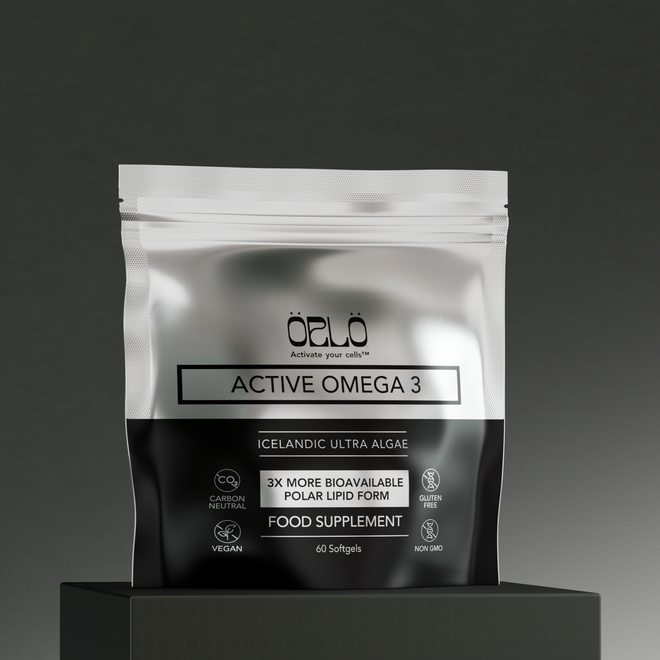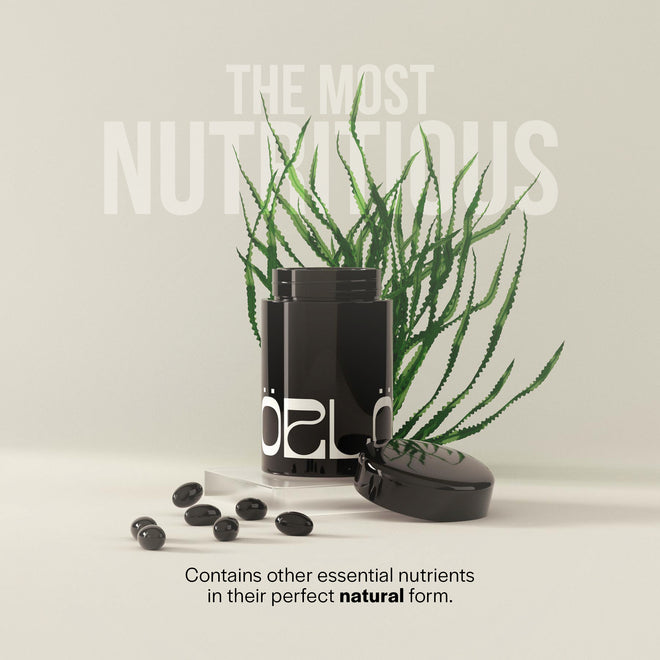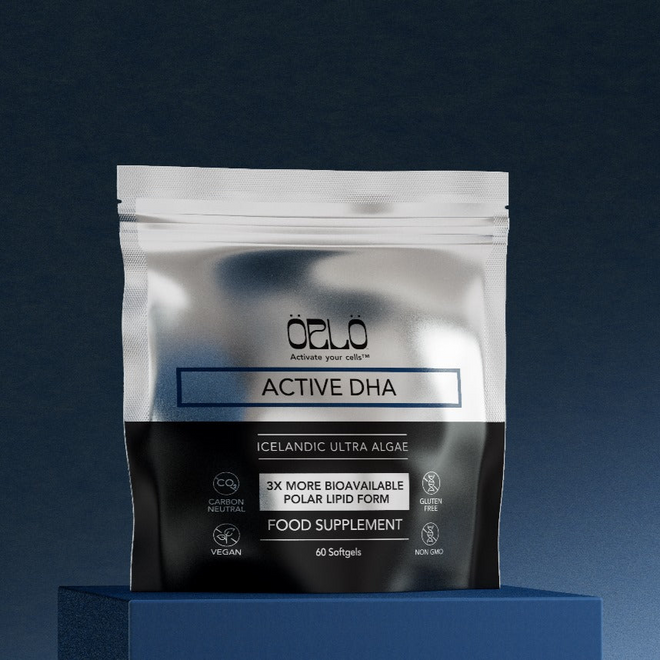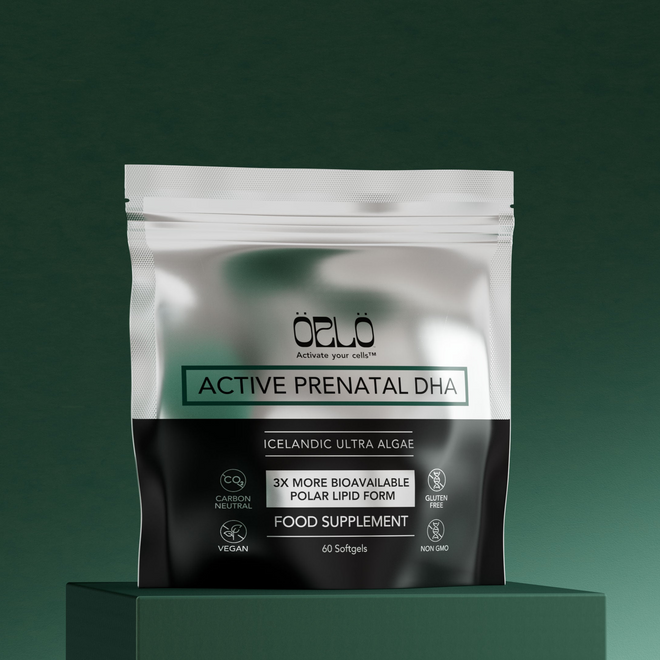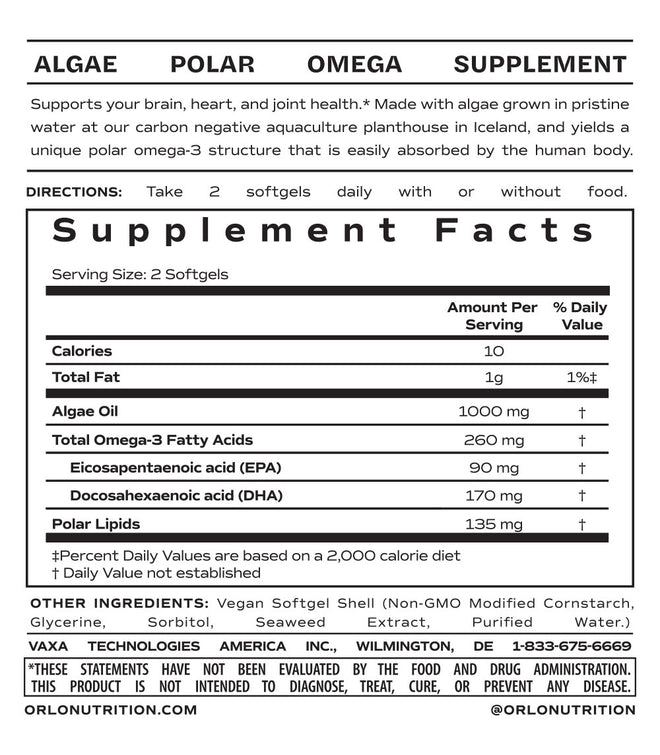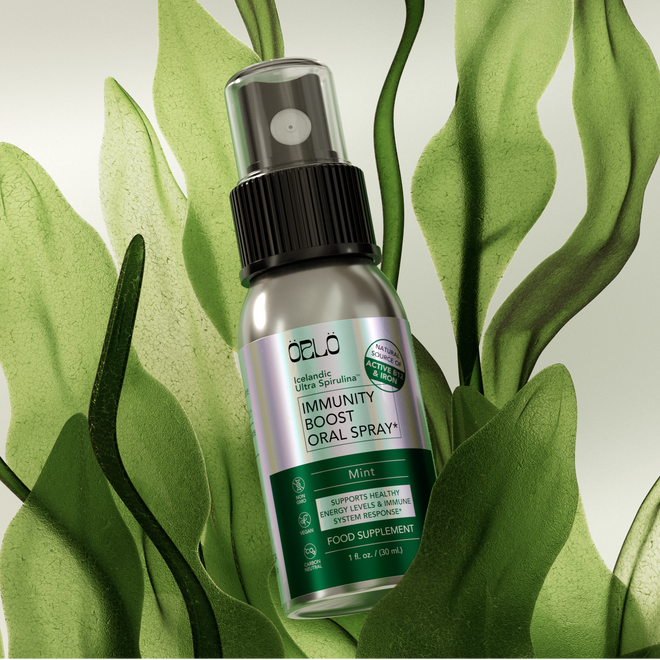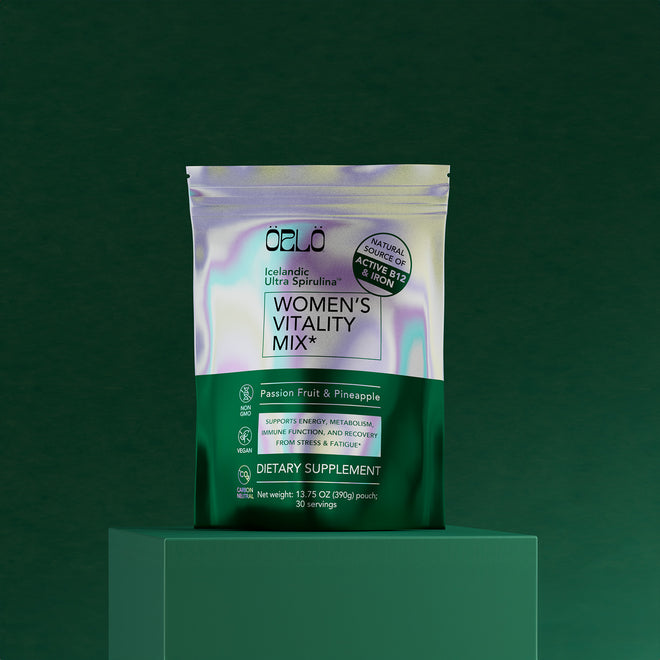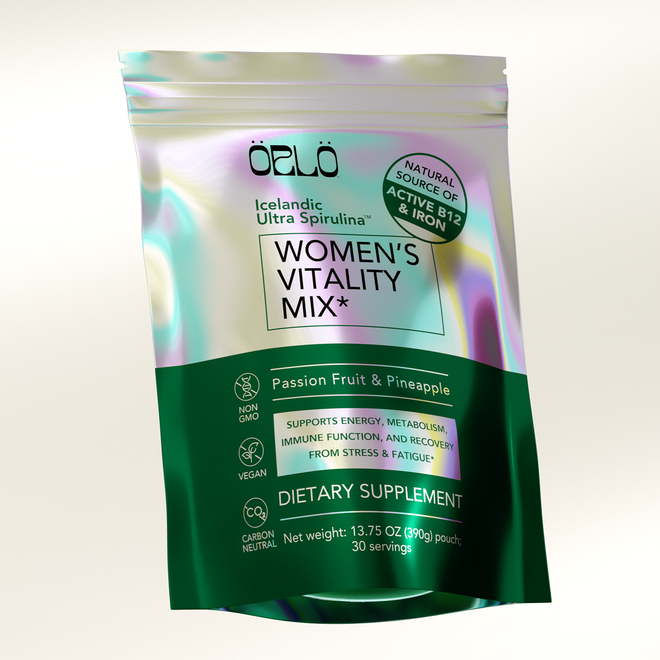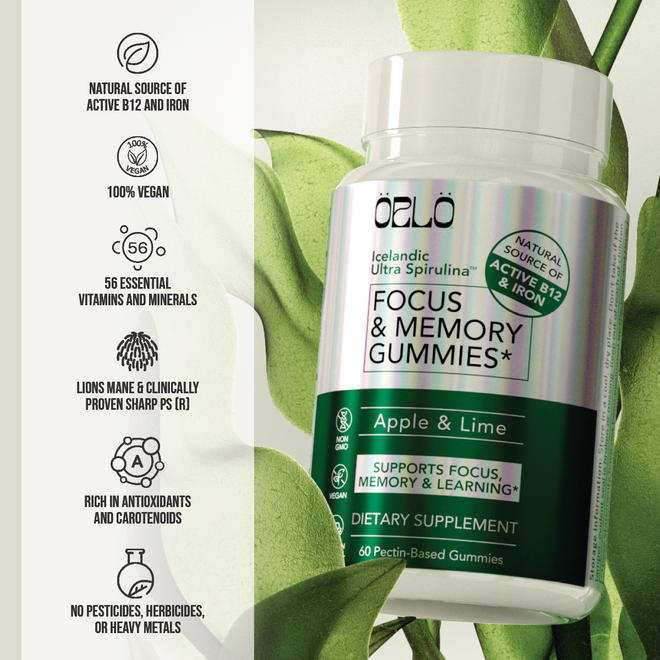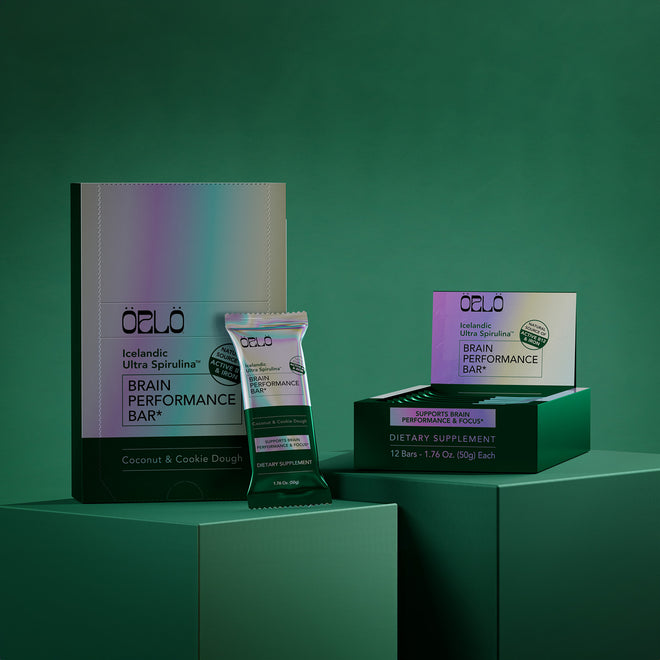Free shipping on purchases over $69
Nutrition for the Aging Male: A Guide to Maintaining Health & Vitality
Marci Clow, MS, RDN
Aging is inevitable, but keeping the body and mind sharp with good habits can help you to age gracefully. The gradual, continuous, natural process known as aging begins in early adulthood, and while there is not a one-size-fits-all specific age or definition, the National Institute on Aging (NIA) generally describes individuals aged 65+ as “older adults.” Embracing a healthy diet and partaking in regular physical activity can significantly reduce the risk of many chronic diseases for older adults but can also lead to an enhanced quality of life and the ability to live independently for longer. This article will focus on the impact of nutrition on the health and vitality of the aging male.
The broad scope of the aging adult: Is 60 really the new 40?
Sorry folks, but “60 is the new 40” is just a way of describing that people at the chronological age of 60 feel younger and live longer lives than their predecessors. According to the World Health Organization (WHO), increased longevity worldwide may be partially attributed to lifestyle choices that positively impact health. Controllable factors such as diet quality, hydration status, level of physical activity, and whether or not one smokes can greatly impact normal biological changes that occur as people grow older. These factors contribute to the great disparities in health status among people of a similar age and why some people at age 60 may look and feel closer to 40 and others closer to 70.

The NIA deems older adults as those age 65+, the Dietary Guidelines for Americans (DGA) groups those over age 60 as older adults, and the USDA Daily Reference Intakes (DRIs) groups nutrient intake recommendations into ages 51-70 and >70 years of age for older adults. Although many factors influence the aging process, this article addresses challenges and considerations related to nutrition for males over the chronological age of 60.
What age-related physiological changes might impact nutrition?
The natural aging process results in alterations in the digestion, absorption, and metabolism of nutrients. The human digestive system is designed to move food through the digestive tract by a series of muscle contractions known as peristalsis, a process that slows down with age and makes the entire process of eating, swallowing, digesting, and eliminating waste take longer than it used to. Decreased elasticity, paired with slower emptying of the stomach, can also result in constipation, decreased appetite, and an increased likelihood for digestive-related symptoms, such as heartburn, which may occur because of a weakened sphincter between the stomach and the esophagus that results in a reflux of stomach up into the esophagus.
What nutrient requirements should be emphasized for older men?
Nutrient needs don’t change too dramatically as a man ages; however, several nutrients should be emphasized for the aging male. According to data published in the DGA, calcium, vitamin D, potassium, and dietary fiber intake are of public concern for the general US population, including older adults.
Other important considerations for this age group include protein, fluid intake, vitamin B12, and omega-3 fatty acids. Let’s break down the requirements for each:
Dietary fiber: Foods rich in dietary fiber help keep the digestive system healthy and lessen the risk of issues that occur more commonly with age, including constipation. Diets higher in dietary fiber may also reduce the risk of developing cardiovascular disease. Good sources of fiber include fruits, vegetables, beans, and whole grains. The DRI for fiber is 30 grams (g) per day for ages 51-70 and those aged <70, but the average American adult only consumes around ½ of the recommended amount.
Protein: Protein has many functions in the body, including helping you to feel full longer, maintaining consistent blood sugar levels, and staving off the loss of lean muscle that naturally occurs with the aging process. It is recommended to include a wide variety of protein sources throughout the day. Animal-based proteins include eggs, dairy, poultry, fish, and lean beef or pork. Plant-based protein sources, such as nuts, seeds, tofu, lentils, and beans, also provide additional nutrients such as fiber. The general recommendation for protein intake is 0.8 g of protein per kilogram of body weight, or weight in pounds multiplied by 0.36; however, an increased amount is suggested for those with an increased activity level or impaired health status. The DRI for protein is ~56 g per day for men older than 51; this amount is based on a man who weighs 154 pounds. Around 30% of men over age 70 fall short of these guidelines.
Calcium: Calcium is vital for many bodily processes, including muscle and nerve function, and it helps maintain healthy bones. Decalcification of bones occurs with the aging process, which is reflected in an increase in the recommended daily calcium intake for men over age 70. Good dietary sources of calcium include dairy products, broccoli, kale, sardines with bones, and fortified products, such as juice, plant-based milk, and breakfast cereal. The DRI is 1,000 milligrams (mg) for ages 51-70 and 1,200 mg for >70.
Vitamin D: Vitamin D has a wide range of physiological functions in overall health and is critical for calcium absorption and for support of immune, cognitive, and cardiovascular health. Low vitamin D levels occur more frequently in older adults. Foods containing vitamin D are limited to fatty fish, egg yolks, fortified foods, and a small amount of other animal source foods. Vitamin D can also be made in the body with regular exposure to the sun. The DRI for males aged 51-70 is 15 micrograms (mcg), which is the same as 600 international units (IU), and for those >70 DRI is 20 mcg (800 IU).
Potassium: Potassium is critical for fluid balance and is needed for the kidneys, heart, muscles, and nerves to function properly. It is found in a wide variety of foods, including dried apricots, lentils, acorn squash, prunes, potatoes, kidney beans, orange juice, and bananas. The DRI for ages 51-70 and <70 is 3,400 mg.
Vitamin B12: Even though most men regularly meet the recommended intake of B12 from food, it may not be enough to support optimal health. Vitamin B12 is essential for producing energy from food, for red blood cell formation, and for the function of the central nervous system. The ability to absorb B12 can decrease with age and with certain medications. It naturally occurs in animal foods, but supplementation is recommended for those who are vegetarian/vegan, older adults, and others who have conditions or take medications that affect the ability to absorb B12 from food. The DRI for ages 51-70 and <70 is 2.4 mcg.
Omega-3: Omega-3s stand out as a power player for the health of aging men, with evidence for supporting brain and heart health, along with other conditions that stem from inflammation. The predominant sources of omega-3s are salmon, cold-water white fish, eggs from chickens fed enriched grain, certain nuts and seeds like walnuts and flax seeds, plant-based beverages fortified with omega-3s from algae, and omega-3 supplements. To get omega-3s from the diet, most health organizations recommend 2 servings of fatty fish per week or somewhere between 250 and 500 mg of the omega-3s eicosapentaenoic acid (EPA) and docosahexaenoic acid (DHA) daily from supplements. However, because of variations in diet, health status, and the wide range of dosages used in the research for specific age groups and conditions, it is recommended to speak with a healthcare provider to determine how much omega-3 is suitable for your individual needs. The DRIs specify an adequate intake requirement of 1.6 g/day of alpha-linolenic acid, a type of omega-3 that comes from plants and for which only a small amount is converted to EPA and DHA.
Fluid intake: From keeping blood pumping to the heart and kidneys to lubricating the joints, adequate fluid is needed for most bodily functions. Older adults are prone to dehydration for many reasons, including a diminished ability to sense thirst. The recommended fluid intake from all sources (drinking water, food, and other beverages) for ages 51-70 and <70 is 3.7 liters per day, around 10 cups. To roughly estimate how much water to drink per day, divide your weight in pounds by two. For example, a man who weighs 180 pounds should drink around 90 ounces (11 cups) per day.
Pro Tip: A good way to assess adequate hydration is to look at the color of your urine. Pale yellow generally indicates you are drinking enough fluid; darker urine may mean you need to increase your water intake.
What are common nutritional challenges faced by men as they age
As described above, the natural aging process can result in unwelcome physiological changes. Some of these can affect appetite, cause alterations in taste and smell, result in dental or swallowing problems, and lead to digestive issues such as acid reflux or constipation. Additionally, medication can change how food tastes or nutrients are absorbed.
Seniors may also have limited mobility that prevents them from shopping for or cooking food, or they may not want to cook for just themselves, resulting in making food choices that negatively impact their nutritional status. Budget is also an obstacle that can impair the nutritional intake of older men; in fact, ½ of all seniors living alone lack the income to pay for basic needs, including a healthy diet.
Healthcare providers should be encouraged to assess the nutritional status of all older adults and refer aging males who face these challenges to a registered dietitian who can provide solutions and strategies to address individual nutrition needs, dietary modifications, and, if deemed necessary, suggestions for supplementation that are within their budget.
Other solutions for supporting adequate nutrition for older adults might include:
Meal planning: If meal planning is done in advance, it can make purchasing and preparing nutritionally rich meals easier and help stretch a limited budget because you only buy the foods you need. If mobility and access to transportation are a problem, grocery delivery services are widely available.
Meal delivery: If the time and effort of meal planning seems overwhelming, consider one of the many services that can deliver nutritious meal kits or pre-prepared meals straight to the doorstep. Meal delivery subscription programs or free meal services that provide meals to seniors in need are both options. (see additional resources below for links)
What dietary recommendations support healthy aging?
To support optimal health at any stage of life, it is important to eat a wide variety of nutrient-rich fruits, vegetables, whole grains, lean proteins, and healthy fats. The focus for healthy aging should be a balanced dietary pattern with fresh, whole foods, with minimal processed foods and drinks that have added sugar and may lack nutrient value. Canned or frozen foods are also okay to include. The basic premise of a balanced diet is to fill ½ of the plate with fruits and vegetables, ¼ with whole grains, and ¼ with healthy protein. The United States Department of Agriculture (USDA) created this easy-to-follow concept known as MyPlate to teach people how to build a healthy, balanced plate and is based on the Dietary Guidelines for Americans. MyPlate offers resources targeted specifically to help seniors make healthy eating choices. (see additional resources below for link)
Did you know?: What may come as a surprise is that not just what you eat, but how you eat supports healthy aging. Research has suggested that eating with others is associated with healthier eating and better mood, whereas those who eat alone tend to eat less nutritiously and skip meals resulting in low energy and diminished health.
What lifestyle modifications promote healthy aging?
A healthy, active lifestyle is more than just getting your daily steps in. It includes engaging in activities that are meaningful to you and benefit your mind and spirit, as well as your body. Top lifestyle tips for staying active and engaged during the golden years include:
Keep Moving: Find ways to work increments of physical activity into each day, as it is known to contribute to lifting one’s spirits and helping with energy during the day and sleep at night. The Centers for Disease Control and Prevention (CDC) recommends 150 hours of activity per week, which is just over 20 minutes of moderate activity per day, such as walking, gardening, or going for a slow bike ride. Resistance exercise combined with an adequate protein intake can help maintain muscle mass and strength in older adults. Some examples of resistance exercises include yoga, Pilates, light weightlifting, or the use of resistance bands.
Engage with other people: Participating in regular social activity has been linked to better overall health and longevity in older adults. In fact, a 2016 study identified social engagement as 1 of the 9 healthy behaviors that contribute to vitality and longevity in people from different regions around the world. In 2024, Netflix highlighted the 12 years of research discussed in this study in a series titled “Live to 100: Secrets of the Blue Zones.” Some ideas to encourage aging adults to become more socially engaged might include finding a community senior center in your area that offers shared meals, card games, or exercise classes; taking an art or healthy cooking class; joining a hiking or bird-watching club, or exploring volunteer activities in the community, truth be told you’re never too old to try something new!
What roles does nutrition have in age-related chronic disease prevention and management?
From heart disease and diabetes to osteoporosis and cognitive decline, nutrition and lifestyle recommendations for prevention are similar: follow a dietary eating pattern that includes a wide variety of nutrient-rich foods; strive to engage in physical activity daily; keep your weight under control; and don’t smoke. Regardless of what we do or don’t do, statistics tell us that individuals over age 60 have a decline in muscle mass, bone density, and cognitive health and are at an increased risk for chronic disease. Although nutrition is critical for reducing the risk of all chronic diseases, let’s break down a few conditions where nutrition may play a critical role:
Bone health: Bone is a living tissue that begins to deteriorate with age; it loses minerals, and the structures weaken, kind of like when wood is damaged by termites. Although bone mass peaks in early adulthood, calcium continues to be deposited and withdrawn daily, so it’s important to continue to consume calcium-rich foods and get adequate vitamin D to help with calcium absorption. Whatever your age, you are never too old to nourish the bones with good nutrition.
Did you know?: Although women are more likely than men to have osteoporosis, 1 in 5 men over age 50 will end up with a fracture due to low bone density, and men have a greater likelihood of developing osteoporosis than they do prostate cancer.
Heart health: According to the American Heart Association (AHA), more than 1 in 3 adult men have some sort of cardiovascular disease. Limiting foods high in saturated fat, such as red meat, butter, cheese, and pastries, and decreasing intake of sugary foods and beverages are dietary measures that are a part of preventing and treating risk factors for heart disease. As described above, adding omega-3 fatty acids to the diet is also considered supportive for heart health.
Prediabetes: According to the CDC, 1 in 3 older adults has prediabetes, and more than 8 in 10 adults don’t even know they have it. The good news is that eating healthy and losing weight can significantly reduce the risk of developing type 2 diabetes in adults of all ages. In fact, research has shown that for every 5% reduction, the risk of diabetes is reduced by 25%.
Joint health: Achy joints are a common concern for men as they get older, and nearly 20% of older adult males have the type of joint inflammation known commonly as arthritis. There are some foods known to increase inflammation, such as sugar, fried foods, processed meats, and those that contain trans fat. However, plant-based foods that contain chemicals called polyphenols and antioxidants, such as berries, cherries, tomatoes, green leafy veggies, nuts, seeds, oranges, and olive oil, may help to fight inflammation. Omega-3 fatty acids also are known to be helpful for anti-inflammatory issues, including those that affect joints.
Which nutrients support cognitive function and memory?
Nutrition plays a significant role in age-related cognitive health, and studies have suggested that good nutrition in early adulthood can help to maintain and even slow cognitive function into the older adult years. Although cognitive decline is a normal part of aging, foods containing anti-inflammatory components may play a role in reducing the risk of neurodegenerative disease, specifically those loaded with polyphenols and antioxidants, such as berries. The MIND diet (Mediterranean-DASH Intervention for Neurodegenerative Delay) is a hybrid of the Mediterranean and Dietary Approaches to Stop Hypertension (DASH) diet. This plant-forward dietary pattern is focused on foods specifically linked to brain health and emphasizes berries (2 servings/week), nuts, green leafy vegetables, whole grains, and fish, and limits saturated fats. Again, a similar eating pattern is recommended for reducing the risk of other chronic diseases.
Specific nutrients known to play a role in support of cognitive health include:
Omega-3s: The link between cognitive health and dietary intake of omega-3s has been the subject of decades of research. A meta-analysis of observational and experimental studies published in 2022 suggested that 2 servings of fish per week were associated with a 10% reduction in all-cause dementia and a 30% decrease in the risk of Alzheimer’s disease, an effect linked to the impact of omega-3 on cognitive executive function. One of the pre-eminent omega 3s, DHA is part of the building block of cell membranes and plays a vital role in brain cell function. DHA accumulates in neuronal synapses in the brain, which is said to be the mechanism for its potential role in slowing cognitive decline. Additional research is needed to further demonstrate the mechanism and both short- and long-term effects of omega-3s in cognitive function.
B vitamins: The B vitamins help metabolize nutrients for energy to the brain and are necessary for neurotransmitter synthesis. They also help to protect against cognitive decline by breaking down homocysteine, a substance for which increased levels have been linked to the development of dementia.
Vitamin D: Low blood levels of vitamin D have been linked to an increased risk of cognitive decline. Vitamin D is necessary for brain neuron growth, development, and survival.
Antioxidants: Plants with polyphenols and antioxidants, plus nutrients like vitamins C and E, provide antioxidant activity to protect brain cells from damage caused by free radicals.
Key Takeaways:
Nutrition plays a crucial role in the maintenance of health and quality of life and reduces the risk of chronic disease for aging males. Healthcare providers should consider nutrition assessments and provide aging men with access to nutrition education and resources as part of routine care for older adults. By addressing age-related challenges and prioritizing optimal nutrition, we can empower men to age gracefully and thrive in their later years.
Additional Resources:
National Council on Aging, Nutrition and Exercise: https://www.ncoa.org/nutrition-exercise/
The Family Dinner Project https://thefamilydinnerproject.org/
USDA MyPlate Older Adults: https://www.myplate.gov/life-stages/older-adults
Supplemental Nutrition Assistance Program (SNAP): https://www.fns.usda.gov/snap/supplemental-nutrition-assistance-program
National Council on Aging, 9 Best Meal Services of 2024: https://www.ncoa.org/adviser/healthy-living/best-meal-delivery-service/
Meals on Wheels America: https://www.mealsonwheelsamerica.org/learn-more/national#
Dietary Reference Intake Calculator: https://www.nal.usda.gov/human-nutrition-and-food-safety/dri-calculator
American Academy of Nutrition and Dietetics: Find a Registered Dietitian https://www.eatright.org/find-a-nutrition-expert
Omega-3s: A Power Player for Health Benefits to Men https://orlonutrition.com/blogs/news/omega-3s-a-power-player-for-health-benefits-to-men
Note: The information presented in this article is for general educational purposes only and is not a substitute for medical advice. For a personalized plan, please consult with your health care provider or a registered dietitian.
References
Barnes LL, Dhana K, Liu X, et al. Trial of the MIND diet for prevention of cognitive decline in older persons. N Engl J Med. 2023;389(7):602-611. doi: 10.1056/NEJMoa2302368
Bojang KP, Manchana V. Nutrition and healthy aging: a review. Curr Nutr Rep. 2023;12(3):369-375. doi: 10.1007/s13668-023-00473-0
Buettner D, Skemp S. Blue zones: lessons from the world’s longest lived. Am J Lifestyle Med. 2016;10(5):318-321. doi: 10.1177/1559827616637066
Centers for Disease Control and Prevention. Prediabetes Statistics. Updated May 15, 2024. Accessed December 1, 2024. https://www.cdc.gov/diabetes/communication-resources/prediabetes-statistics.html
Dietary Guidelines for Americans, 2020-2025. 9th ed. U.S. Department of Agriculture and U.S. Department of Health and Human Services. December 2020. Accessed November 30, 2024. https://www.dietaryguidelines.gov/sites/default/files/2020-12/Dietary_Guidelines_for_Americans_2020-2025.pdf
Giezenaar C, Chapman I, Luscombe-Marsh N, et al. Ageing is associated with decreases in appetite and energy intake--a meta-analysis in healthy adults. Nutrients. 2016;8(1):28. doi: 10.3390/nu8010028
Hamman RF, Wing RR, Edelstein SL, et al. Effect of weight loss with lifestyle intervention on risk of diabetes. Diabetes Care. 2006 ;29(9):2102-2107. doi: 10.2337/dc06-0560
Harvard Medical School. Foods that fight inflammation. Harvard Health Publications website. Update March 26, 2024. Accessed December 3, 2024. https://www.health.harvard.edu/staying-healthy/foods-that-fight-inflammation
Kosti RI, Kasdagli MI, Kyrozis A, et al. Fish intake, n-3 fatty acid body status, and risk of cognitive decline: a systematic review and a dose-response meta-analysis of observational and experimental studies. Nutr Rev. 2022;80(6):1445-1458. doi: 10.1093/nutrit/nuab078
Melzer TM, Manosso LM, Yau SY, et al. In pursuit of healthy aging: effects of nutrition on brain function. Int J Mol Sci. 2021;22(9):5026. doi: 10.3390/ijms22095026
Quigley KK, Hermann JR, Warde WD. Nutritional risk among Oklahoma congregate meal participants. J Nutr Educ Behav. 2008 Mar-Apr;40(2):89-93. doi: 10.1016/j.jneb.2007.08.014
The American Heart Association's diet and lifestyle recommendations. American Heart Association Website. Reviewed July 30, 2024. Accessed December 5, 2024. https://www.heart.org/en/healthy-living/healthy-eating/eat-smart/nutrition-basics/aha-diet-and-lifestyle-recommendations
Wickramasinghe K, Mathers JC, Wopereis S, et al. From lifespan to healthspan: the role of nutrition in healthy ageing. J Nutr Sci. 2020;9:e33. doi: 10.1017/jns.2020.26
